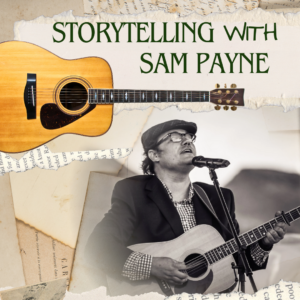Your Library is hosting bestselling author Sharyn McCrumb on Thursday, May 15 at 6 p.m. in the library’s Jones Meeting Center.
McCrumb will talk about her “Ballad” novels, which revolve around Appalachian history and folklore. Her books will be for sale and she’ll sign copies afterward. This event is generously sponsored by the Friends of the Johnson City Public Library.
A New York Times bestselling and award-winning author who lives in Virginia’s Blue Ridge, McCrumb has published over 30 novels and short stories. Throughout her 40-year career, McCrumb’s work has received wide national acclaim and awards.
McCrumb is perhaps best known for her “Ballad” novels, fictional reimaginings of true historical stories set in East Tennessee and Western North Carolina. Throughout the series, she weaves narratives steeped in tradition and infused with the authentic spirit and character of the Appalachian region.
You can find many of McCrumb’s books in the Library’s collection, and as ebooks and audiobooks through Tennessee R.E.A.D.S. and the Libby app.
We talked with McCrumb about her writing inspiration, creative process, and historical ties to Appalachia.
Your family has lived in Appalachia since the 1790s. How does this deep connection to our region shape your love of stories and approach to storytelling?
Storytelling is an intrinsic part of Appalachian culture, and we come by it honestly. The region’s early settlers, who came from Scotland and Ireland, had a strong bardic tradition. They used stories to pass along the traditions, values, and history of their people in a narrative form that listeners would remember.
You can find versions of these traditional stories still around today, although they have been changed to fit a new environment. The tale of St. Mungo of Glasgow, who caught a salmon in the Firth of Clyde and found a ring inside it, turned into an Appalachian tale about a Tennessee farmer who discovers a gold ring while catching a trout in a mountain stream. The story is the same; only the details change.
What are some of the characteristics of this region that have captured your literary imagination?
I am most captivated by the connections. This region is full of metaphorical kudzu. If you pull on one vine, it always leads you somewhere else.
The greatest connection is the geologic one. Go back far enough—450 million years ought to do it—and you will find that the Appalachian Mountains were connected to the mountains of western Britain. The continents were configured differently and the Atlantic Ocean didn’t exist yet, but the evidence of that connection is still present.
The human connections are equally intricate and surprising. The Appalachian frontier wasn’t a populous place, and the same families continue to turn up throughout the decades.
You often weave history and folklore. How do you approach blending fact with fiction?
Often I keep the fact and fiction separate within the same book. I’ll depict the historical part of the book as accurately as I’m able, at a distance of a century or more. Then interspersed within the narrative, I will include segments set in the present that feature fictional characters.
You see this in “Ghost Riders,” my novel about the Civil War in the North Carolina/Tennessee mountains. Spencer Arrowood, in contemporary time, is trying to find information about the last man killed in the Civil War, a Union soldier who shares his last name. Spencer is a fictional character, but the research he does and the soldier he’s looking for are real.
Often I’ll add the historical facts I have to a fictional narrative. I take my best guess—based on careful research—to render dialogue and descriptions that make the people and places come alive for the reader.
For instance, in “King’s Mountain” I took facts about a real person, Virginia Paul, and gave her an imaginative interpretation. She was a redheaded laundress for the British commander Major Patrick Ferguson in the Revolutionary War. Virginia Paul told the Overmountain Men how to identify Major Ferguson before the battle of King’s Mountain, then hurried down the mountain and “vanished” according to historical accounts. No more is heard of her.
I knew that according to tradition, Major Ferguson’s Scottish clan had a family banshee. Highland folklore says that banshees can appear as pretty, redheaded young women and are often sighted washing bloody clothes in a forest stream. Virginia Paul was a pretty redhead, and she was a laundress with an active military regiment. Washing bloody clothes in a forest stream? I should think she would.
If you look closely at Virginia Paul in “King’s Mountain,” you’ll find that she’s not human. In scene after scene there are little indications of her supernatural knowledge and power. I didn’t change the facts of the historical Virginia Paul, but I took what I knew and inserted my interpretation.
What have you learned about human nature through the characters you’ve brought to life?
What has impressed me about the real people I have written about is their shared trait of perseverance. The historical figures in my books were frontiersmen. They had little education and no powerful network to ensure their success. All they had was determination, hard work, and a firm dedication to their goals.
You can learn more about Sharyn McCrumb’s work here. Visit our events calendar to find more exciting programs for adults. Follow Johnson City Public Library on Facebook and Instagram to receive updates about Library programs, collections, and services.
More News





